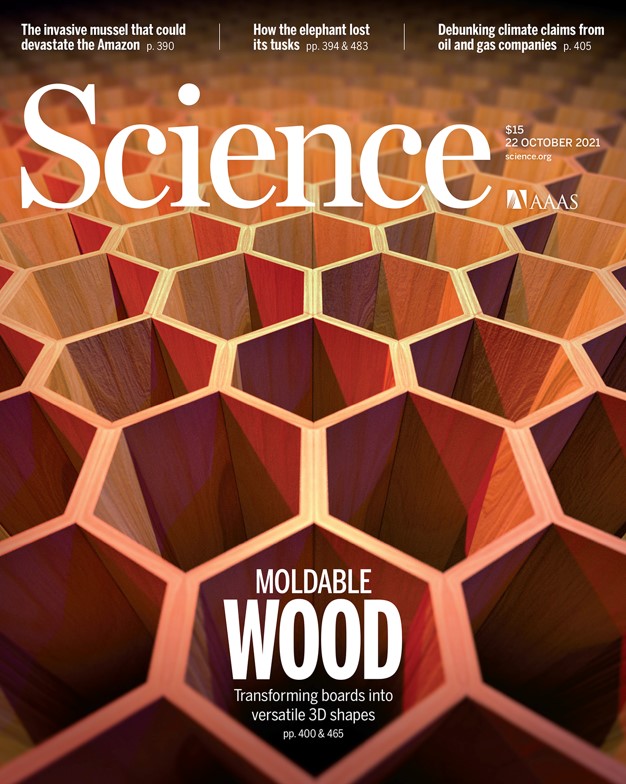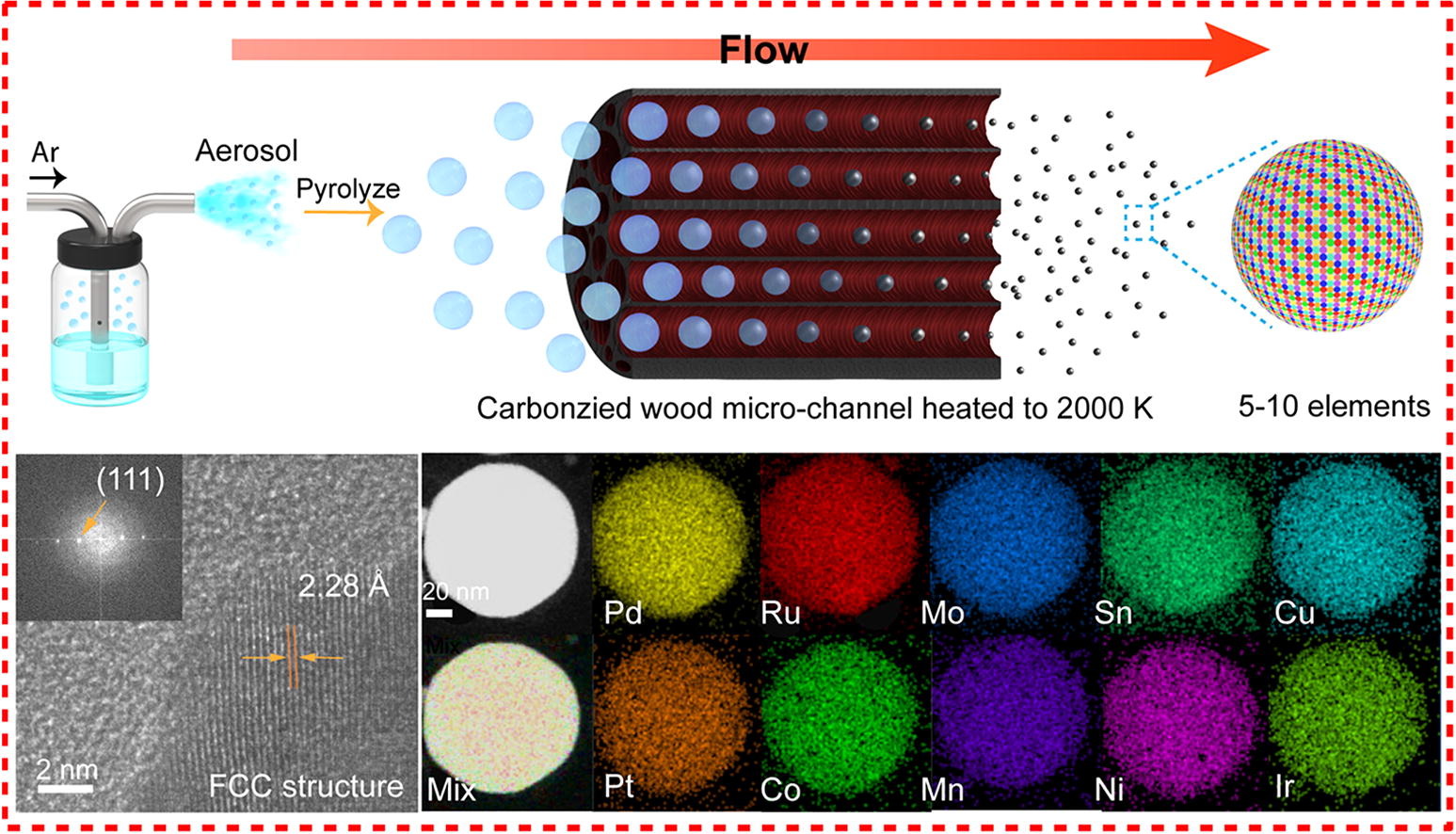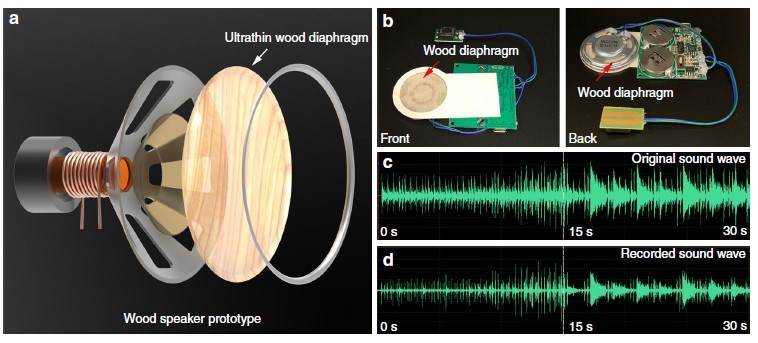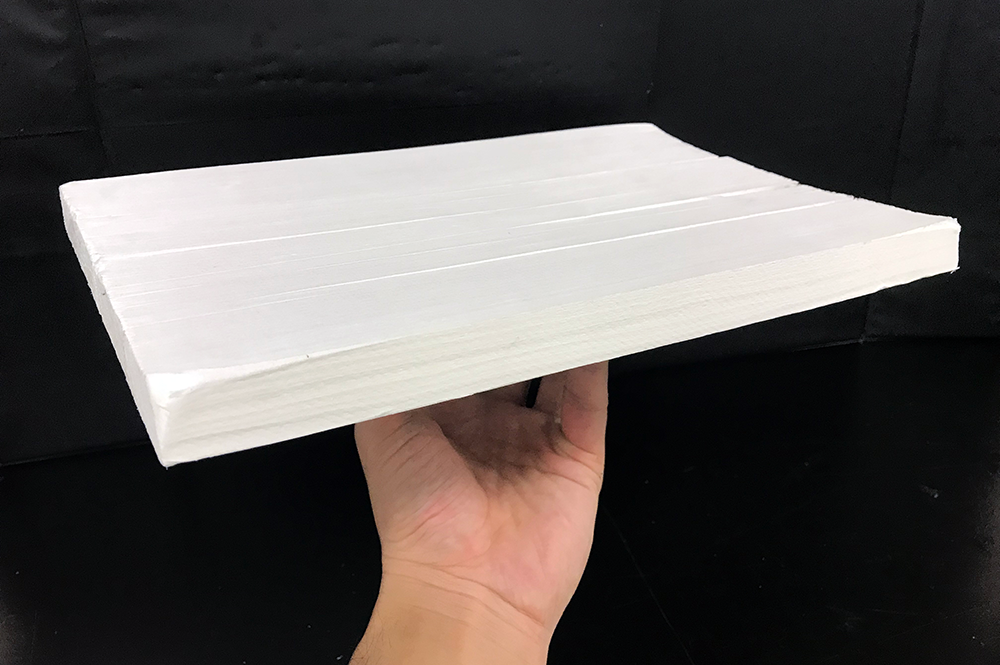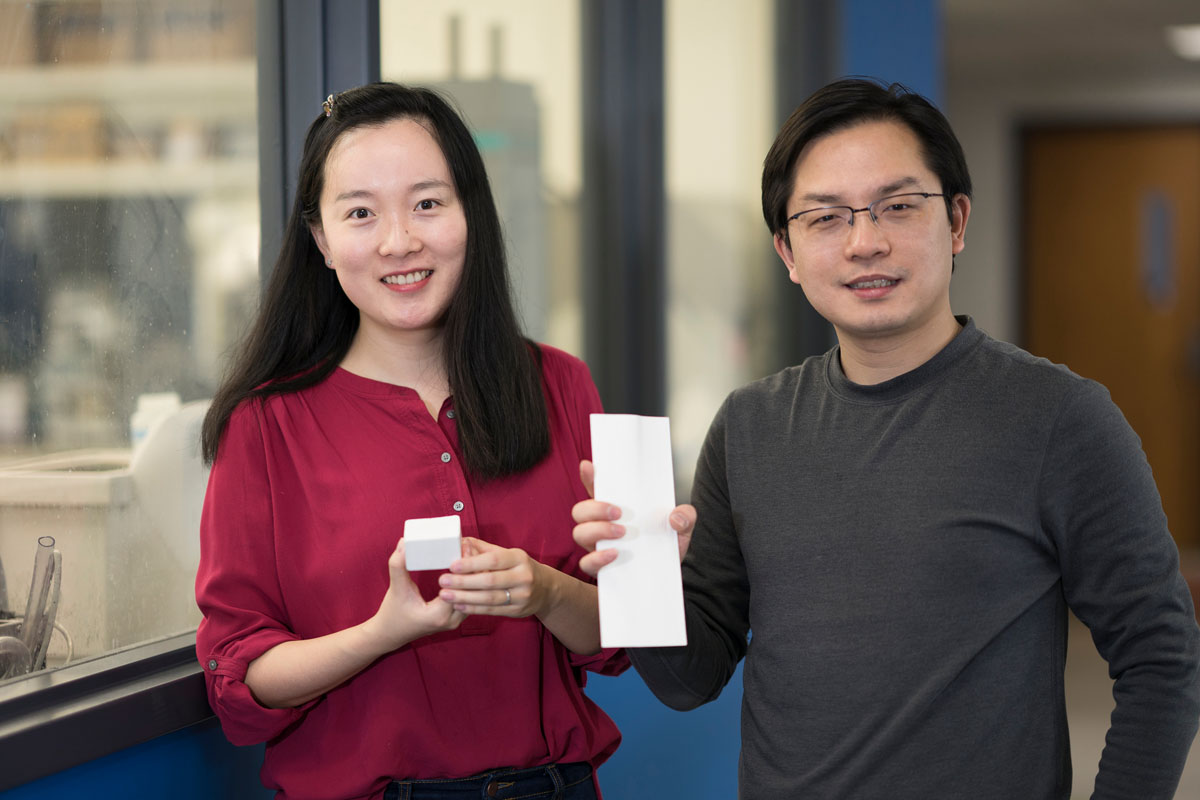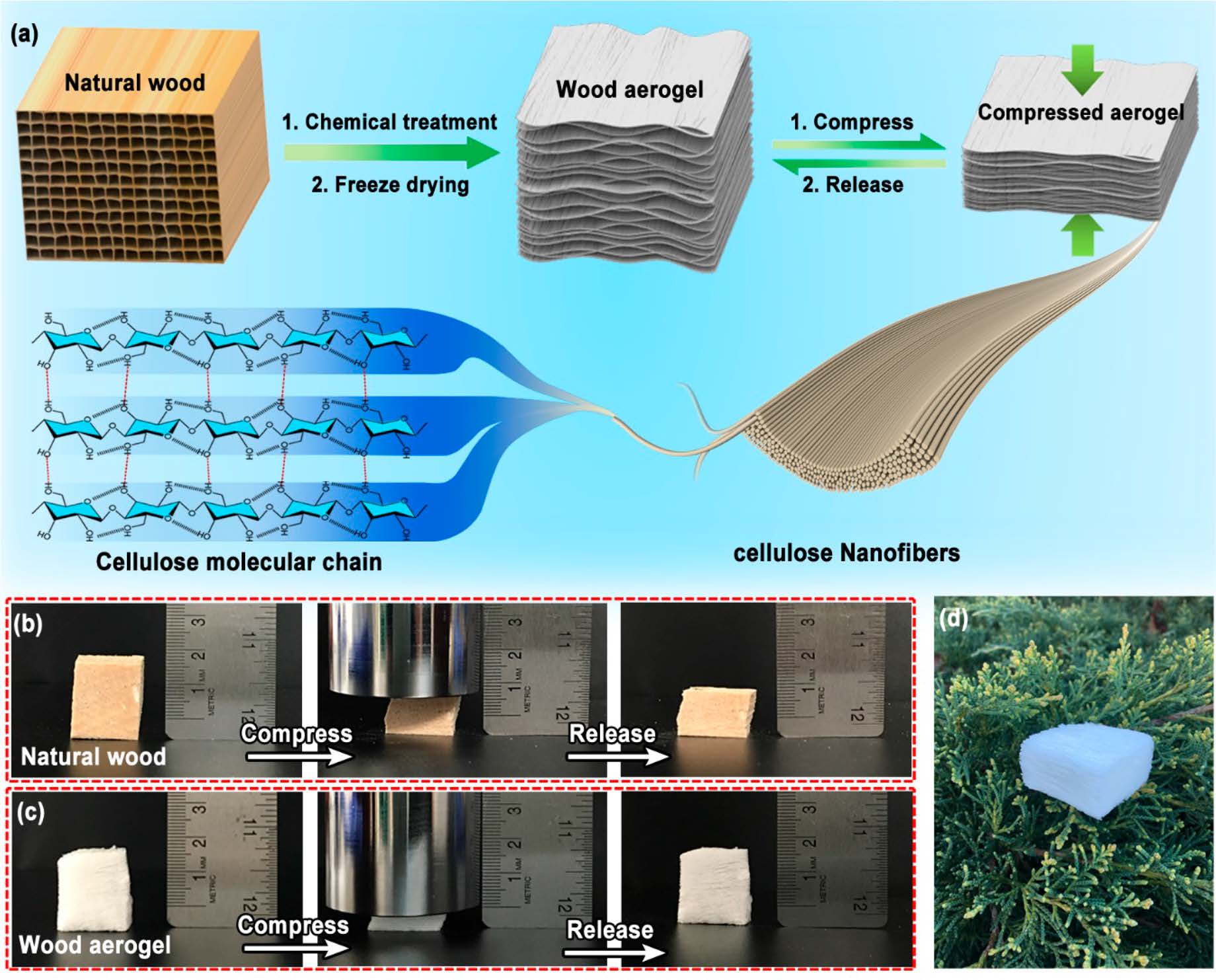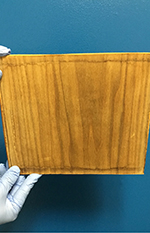News Story
Durable Wood Carbon Sponge Could Be the Future of Wearable Sensors, Pollutant Treatment
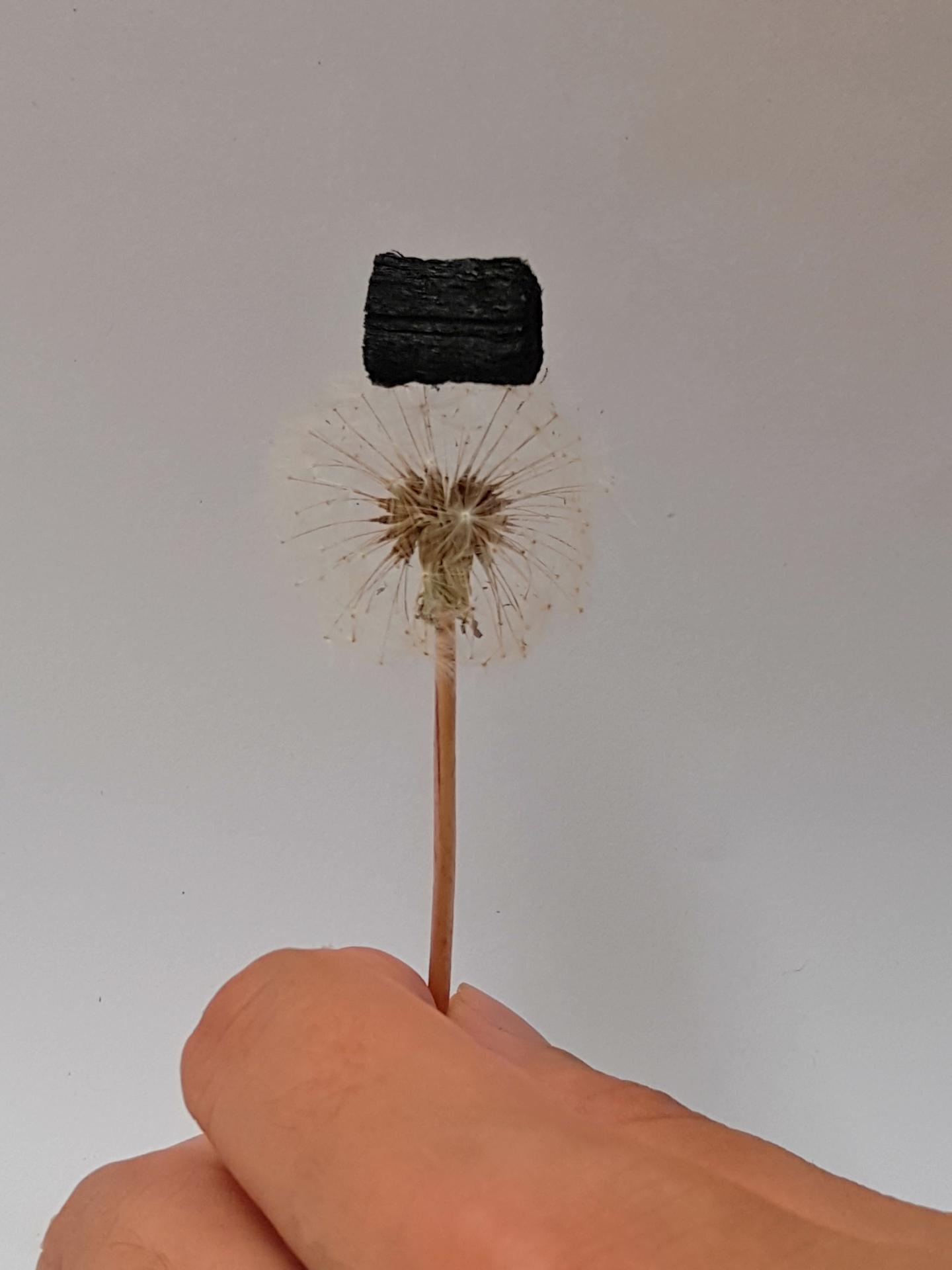
Image: A single wood carbon sponge is light enough to balance atop a dandelion seed head.
Engineers in the UMD Clark School of Engineering have, for the first time, demonstrated that wood can be directly converted into a carbon sponge capable of enduring repeated compression and other extreme mechanical conditions. The engineers’ wood carbon sponge overcomes several limiting factors of other lightweight, compressible carbon sponges because it is simpler, less expensive, and more sustainable to produce. The new sponge can be used in various applications such as energy storage (e.g., batteries), pollutant treatment, and electronic devices and sensors.
A peer-reviewed paper about the research was published March 1 in the journal Chem.
Most lightweight, compressible carbon sponges are made from raw materials that are usually unrenewable fossil resources—such as graphene—and by a complicated fabrication process that involves multiple steps and environmentally unfriendly chemicals. In contrast, the UMD researchers use a simple chemical process to transform balsa wood, a choice biomass-based material that is both renewable and abundant.
“Our results reveal that rigid and incompressible balsa can be made highly compressible by a chemical treatment and carbonization process, yielding a wood carbon sponge with mechanical compressibility and fatigue resistance and electrical response sensitivity surpassing those of most reported compressible carbonaceous materials,” says corresponding author Liangbing Hu, associate professor of materials science and engineering (MSE).
Hu and colleagues achieved the bendable yet resilient architecture of the wood carbon sponge by using common chemicals to destroy the stiff hemicellulose and lignin fibers that maintain the normal cell-wall structure of balsa wood, then heating the treated wood to 1,000C in order to turn the organic material into carbon alone. The net effect of the process was to collapse the repeated, regular, rectangular pockets typical of the microstructure of balsa and other woods and replace them with a stack of wavy, interlocking, arch-like carbon sheets, likened by Hu to a cross between a coiled spring and a honeycomb.
Normal carbonized wood—obtained from only the heating step without any chemical modifications—is so fragile that any reasonable applied force pulverizes it irreversibly into ash and dust. However, the wood carbon sponge withstood and rebounded from substantial compression for up to 10,000 consecutive trials before deformation set in. Such a performance initially surprised the research team.
“Our process for creating the wood carbon sponge is unique because we preserve the structure of the wood. This makes the sponge highly compressible and resistant to stress. This means the performance of our wood carbon sponge is one of the best among all lightweight and compressible carbonaceous materials ever reported,” says lead author Chaoji Chen, an MSE postdoctoral researcher.
After conducting further mechanical and electrical tests on the sponge, the researchers were able to incorporate a slice of it into a strain sensor prototype suitable for attachment to a human finger, a quality desirable for use in wearable fitness or health-monitoring electronics.
The researchers believe that the wood carbon sponge could also be incorporated into water purification devices and energy storage and conversation technologies, such as supercapacitors and rechargeable batteries.
“The abundant applications illustrate the value of a strategy that explores the hidden potentials of natural materials, such as trees, by drawing inspiration from other natural structures and sources,” Hu says.
This work is supported by the Maryland NanoCenter.
Chem, Chen et al.: “Scalable and sustainable approach toward highly compressible, anisotropic, lamellar carbon sponge.” DOI: 10.1016/j.chempr.2017.12.028
Published March 1, 2018


